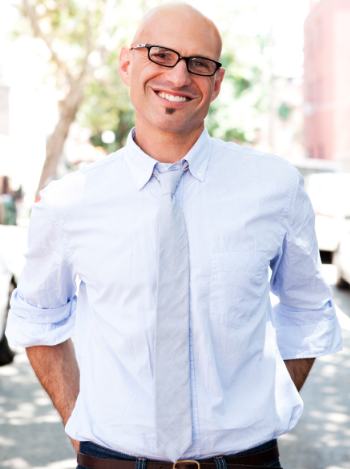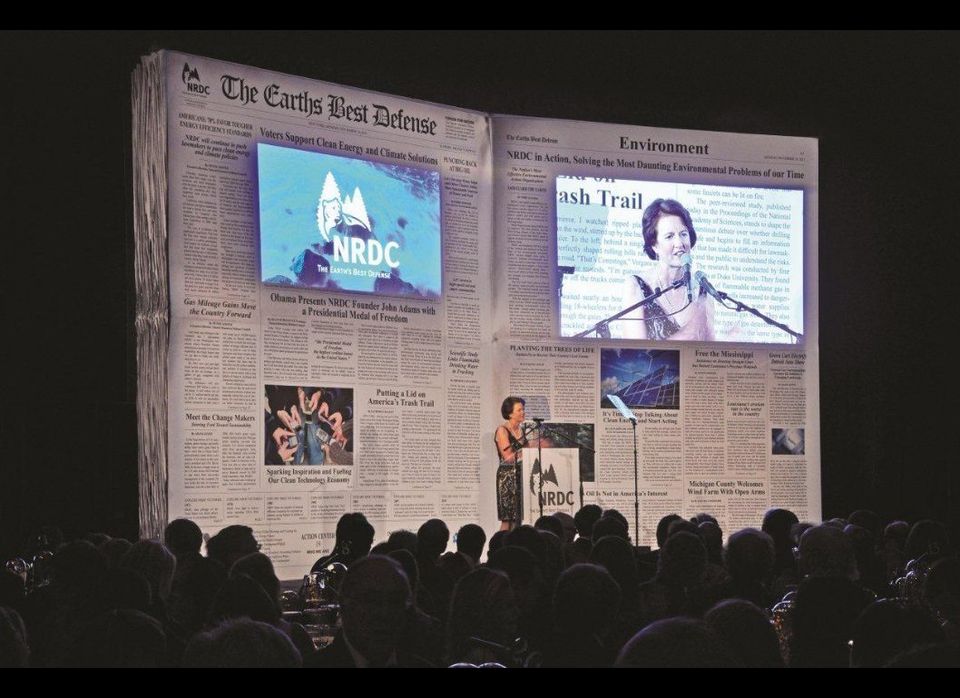Your Start-Up Life is a business advice column by Rana Florida, CEO of the Creative Class Group. In addition to answering readers' questions she features conversations with successful entrepreneurs, creative thinkers and innovative leaders. Send your questions about work, life and play to rana@creativeclass.com
David Stark, President and Creative Director of David Stark Design and Production breaks the rules nearly every day, staging innovative and memorable events for a host of high-wattage celebrity clients such as Beyoncé Knowles and Martha Stewart, top corporations such as Target and Condé Nast, and high-visibility fund-raising galas for the nation's most prominent not-for-profit organizations, including The Whitney Museum of American Art and The Metropolitan Opera.
Whether it is using reels of archived film to chicly replace traditional flower centerpieces for the Film Society gala in Lincoln Center, or using a 5-foot-long, 150 pound birthday cake in the shape of a yellow cab that doubles as a party sculpture and dessert or using paint swatches from the hardware store for curtains, this master of creativity and design, dazzles and delights adding pizzazz, sophistication and shine to any event.
Stark is a frequent guest on E! News, the Today Show, and The View. His work on décor, party planning, and gardening has been featured in the New York Times, ELLE Décor, House Beautiful and many other publications. David Stark: The Art of the Party will be published by The Monacelli Press in April, 2013. His previous books include Napkins with a Twist; To Have & to Hold: Magical Wedding Bouquets, and David Stark Design, a visually stunning monograph that documents his company's design philosophies, conceptual processes, and breadth of work.
I caught up with Stark between events, and we talked about risk, collaboration, creativity, and leadership. He makes the point that if creativity is the core driver of his business, its solid foundations and discipline play just as great a role in its success.

Q. How do you keep your eye on big picture strategy when your work depends on the details?
A. I have two mantras that I repeat again and again to our clients and team:
a. You have to pick out the outfit before you put on the shoes.
b. We need to build the house before we pick out the sofa.
Speaking in metaphors keeps the gang focused. That step by step focus is second nature to me.
Q. What is your approach to risk? What is the biggest risk you took in your career?
A. I like the design work that we do and the events that we create to making a painting. What artist wants to make the same painting again and again?
Change and risk are endemic to what we do. Because each and every one of our projects is for a very high profile person, company, or foundation, each client needs their own specific platform and identity. Thus, strategically we HAVE to come up with new ideas to give each client their own space. You have to remember that no corporation or foundation is having a party because it is fun. There is real business at stake, and I am very lucky to work with clients whose world outlook is all about innovation and risk taking. This propels their events to the vanguard of experiential marketing.
The push of the artist to break new ground is so central to my core that I don't see it as risk-taking at all. It's just what I do. On the other hand, the business side of the company is solid and run as a sound corporation would be run. That is often unusual for a creative business. That foundation and structure married to the creative process (which is all about risk) is what makes us successful, I believe.
I am getting ready for our biggest risk, I think. Our goal is to move our offices and studios to a much larger space ASAP. Right now we are under two separate roofs, and my dream is to all be together. Of course, larger space (in New York City) comes with a much, much bigger price tag, but you know what? We can make MUCH more magic, we can dream even bigger with a bit more leg room.
Q. How do you know when it's time to walk away from a project or client?
A. I've never actually walked away from a project once we have begun one, frankly. I am old fashioned. Once I make a commitment, I see it through until the end, even if there is some pain along the way. That's not to say that there have not been times that I have secretly wanted to walk or RUN, but I stick it out with a smile. Although first and foremost my work is all about creativity, art making, and design, I am in the service business, and I've learned to not get too worked up about anything. Staying calm on the job regardless of the craziness around me is probably one of my trademarks.
Q. What traits do you look for in your clients and partners?
A. PARTNER is the key word. I look for clients who see me as their partner, NOT their vendor. It's a slight but very important shift. As partners, we create happenings, experiences, go on creative journeys together. My team and I could never be right for every single client out there, but we are right for the kind of people, organizations, or companies that really want to go to a place of the unknown. We are NOT picking centerpiece style A, B, or C from a catalogue. That doesn't make catalogue shopping wrong. It's just a really different experience than the conceptual invention process we go through with our clients to compose unique worlds. It takes a really special kind of customer that seeks out that kind of experience, and I count my blessings every day that I have so many of those partners that take that leap of faith with us.
Q. How do you approach new collaborations?
A. I'm very goal oriented. I start each new collaboration by outlining the goals on paper - for myself and for the client. Oftentimes, the goals are obvious - if it is a fundraising event, one goal, of course, is to raise as much money as humanly possible. But beyond the obvious, those goals can be many things: cultivating new supporters, finding an audience, launching a product, garnering press, spreading the word, meeting new friends, celebrating a major life milestone, conveying message, and so on. If we can clearly outline the goals from the start, then we can surpass them, and every decision we make through the process of working together can be made with the goal in mind. It's very basic, but effective.
Q. How has creativity changed our work environment?
A. I can only speak to my work environment, really, but I impart to my gang on a daily basis that there are always creative solutions to every single challenge - whether budget, ideation, or social. Frankly, we do our best work and break new ground when there are challenges to overcome. The question suggests that there has been some kind of creative movement that has changed offices. I'm not sure that that is true. You are either a creative office or you're not.
Q. What type of leader are you?
A. I'm calm, unflappable, kind, supportive, and aim to inspire and teach while getting the job done. You know, the field of special events is hectic and stressful and filled with many people who don't keep their cool. It's a world where things don't necessarily work out exactly as planned. The mark of a good leader is being able to think on your feet, with a smile and a wink, while keeping everyone happy. When things DO work out as planned, that is an amazing bonus, but the rest of the time, the captain of the ship needs to be the voice of calm and strength.
Q. How do you keep your team inspired and engaged?
A. I run the studio like art school. The goal is to learn, grow, and hit all kinds of artistic highs at every turn. We look at tons of art, we periodically go on field trips, we do some team building stuff, but on a day to day basis, this is the real life continuation of what I was immersed in as a student at RISD.
Q. What's the best advice you ever received?
A. It's ok to break the rules, but if you do so, you must do it BRILLIANTLY.
Q. What are your thoughts on failure?
A. Failure? What's that?
